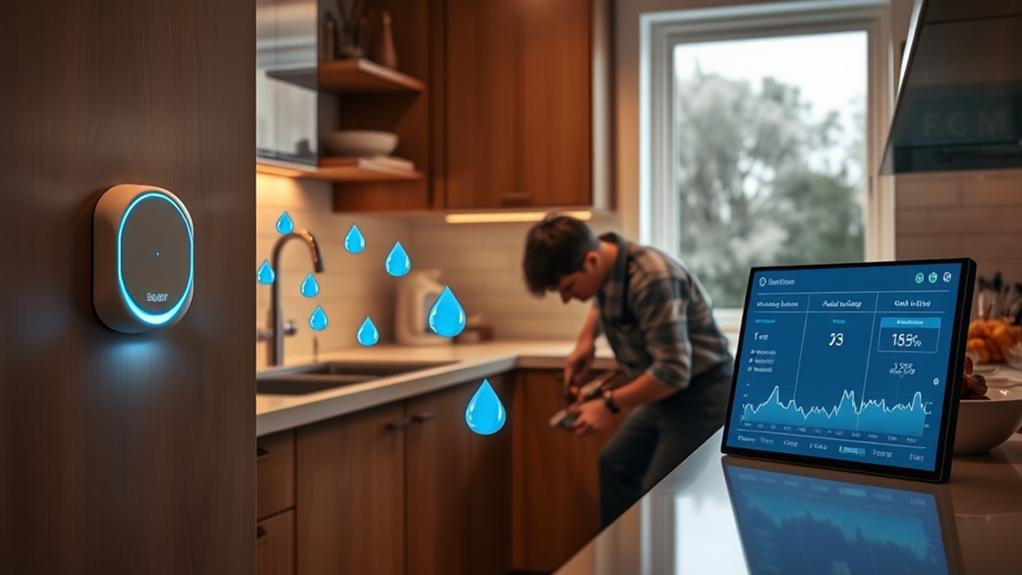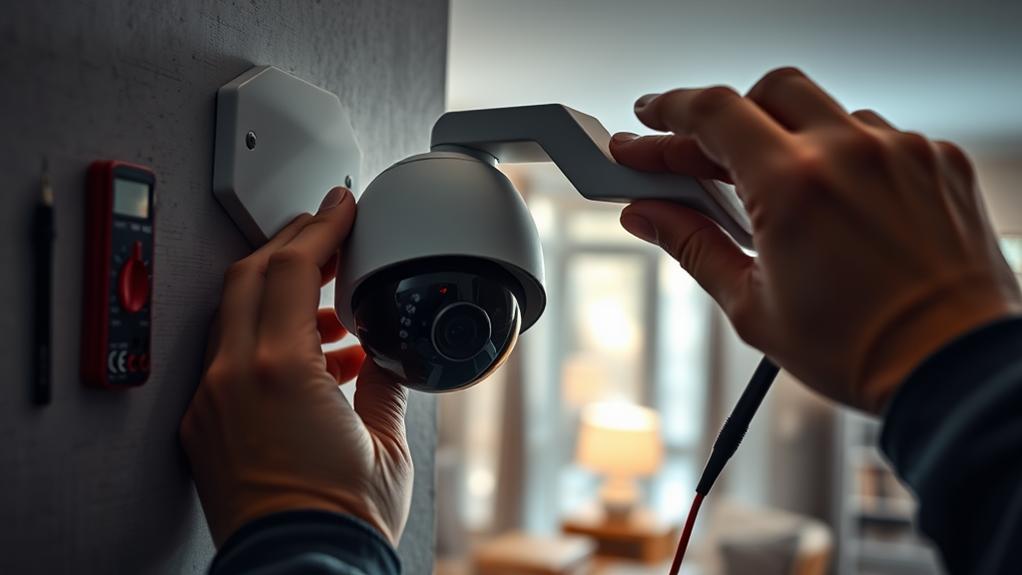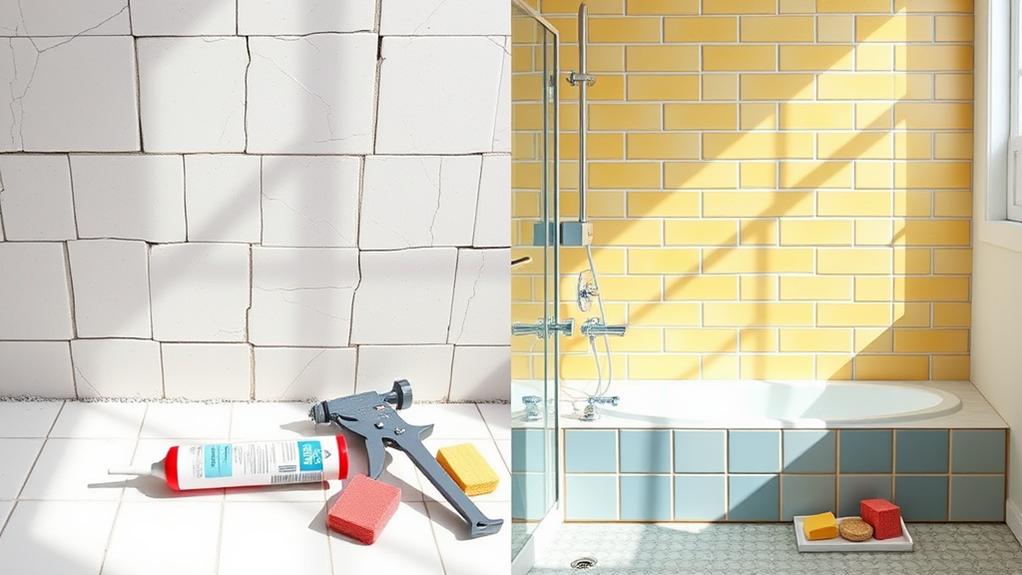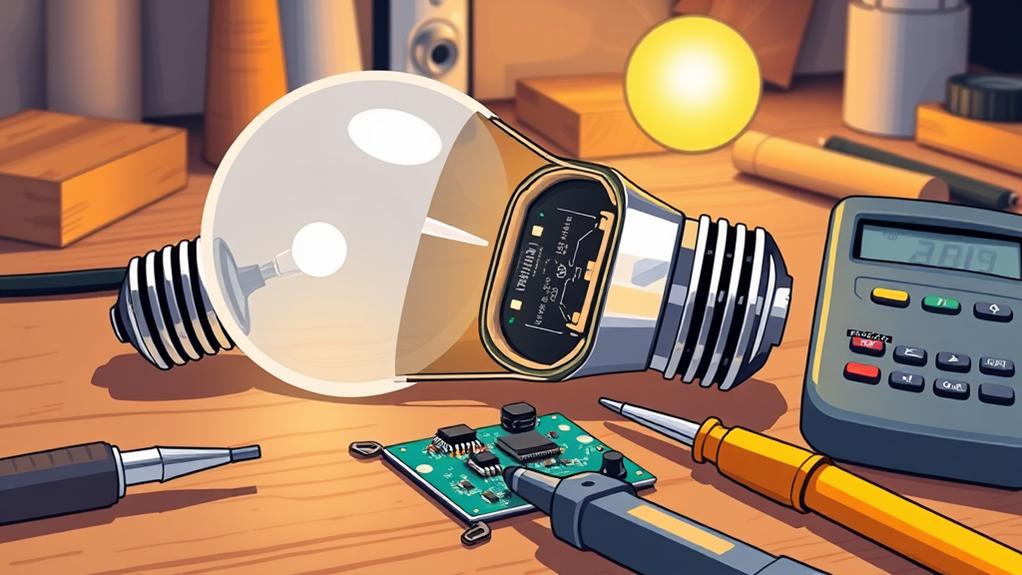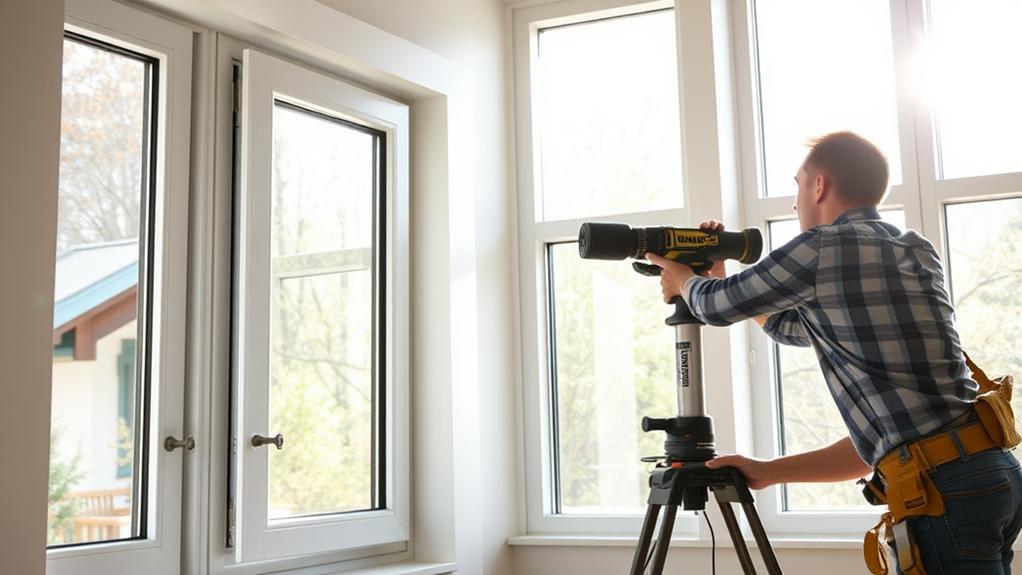When it comes to managing leaks in your home, smart sensors can be game-changers if you know how to use them effectively. You'll want to start by understanding where to place these sensors to maximize their potential. Monitoring water usage regularly can reveal patterns that might indicate a hidden problem. Plus, adjusting sensitivity settings can help minimize unnecessary alerts. But that's just the beginning—there are several more strategies you can implement for ideal results. Let's explore how these tips can transform your leak detection approach.
Understanding Smart Leak Sensors
Smart leak sensors are revolutionizing how we detect and manage water leaks in our homes and businesses. These innovative devices use advanced technology to monitor moisture levels and alert you to potential leaks before they escalate into costly disasters. You might think of them as your home's vigilant guardians, constantly on the lookout for trouble.
These sensors typically employ a combination of audio alarms and smartphone notifications, making it easy for you to stay informed, even when you're away. Many models can integrate with your existing smart home systems, allowing you to automate responses. For instance, you can set up automatic water shut-offs if a leak is detected.
Installation is usually straightforward, meaning you can have your sensors up and running in no time. Whether you place them under sinks, near water heaters, or around appliances, they can help you catch leaks early.
Plus, some sensors come equipped with temperature alerts, warning you about potential freezing conditions that could lead to pipe bursts.
Choosing the Right Sensor
When it comes to selecting the right leak sensor for your needs, you'll want to contemplate several key factors.
Start by considering the sensor's type. There are wired and wireless options; wireless sensors offer more flexibility in placement, while wired models can provide stable connections.
Next, think about the sensor's detection range. Make sure it covers the areas where you suspect leaks might occur.
You should also evaluate the sensor's sensitivity. Some sensors can detect even the smallest amounts of moisture, while others might only pick up larger leaks. If you live in a high-humidity area, a more sensitive sensor could be beneficial.
Additionally, check the sensor's compatibility with your home automation system. You'll want a model that integrates seamlessly with your existing smart devices for ideal performance.
Lastly, consider the power source. Battery-operated sensors offer convenience but require regular battery checks, while plug-in models provide a constant power supply.
Installation Tips for Sensors
Installing leak sensors can be a straightforward process if you keep a few key tips in mind.
First, choose the right location for your sensors. You want to place them in areas prone to leaks, such as under sinks, near water heaters, or around washing machines. Make certain the sensors are close to potential leak sources but away from direct water flow, which could cause false alarms.
Next, verify the surface is clean and dry before installation. This helps the adhesive or mounting brackets adhere properly. If you're using battery-operated sensors, check the batteries first to confirm they're fully charged or new.
When mounting the sensors, follow the manufacturer's instructions carefully. Use a level to make sure they're installed straight, especially if they've a specific orientation.
For sensors with Wi-Fi capabilities, make sure they're within range of your router for ideal connectivity.
Setting Up Notifications
After you've successfully installed your leak sensors, it's time to set up notifications to stay informed about potential leaks. This step is essential for catching issues before they escalate into costly repairs.
Most leak sensors offer customizable alerts, so you can tailor them to your specific needs.
To get started, follow these key steps:
- Choose your alert method: Decide whether you want notifications via app, SMS, or email.
- Set your sensitivity levels: Adjust how sensitive the sensors are to avoid false alarms while still being alert to real issues.
- Schedule notifications: If your sensors allow it, set specific times for alerts to avoid disturbances during off-hours.
- Test the notifications: Once everything's set up, run a test to confirm you're receiving alerts as expected.
Regular Maintenance Practices
While the installation of leak sensors is crucial, regular maintenance practices are equally important to confirm their peak performance. To keep your sensors functioning efficiently, you should routinely check their batteries. A low battery can lead to false alarms or, worse, missed leaks. Make it a habit to replace batteries at least once a year.
Next, inspect the sensors for any signs of wear or damage. Look for cracks, corrosion, or loose connections. If you notice any issues, replace the sensor immediately to avoid any potential leaks going undetected.
Additionally, verify that the sensors are clean and free from dust or debris, as this can affect their sensitivity.
It's also a good idea to test your sensors periodically. Most models have a testing feature that allows you to simulate a leak. Doing this every few months can give you peace of mind knowing that your sensors are working effectively.
Lastly, stay updated on any software or firmware updates provided by the manufacturer. These updates often come with improvements that enhance performance or fix bugs.
Integrating With Smart Home Systems
Integrating leak sensors with your smart home system enhances your home's overall safety and efficiency. By connecting these devices to your existing network, you can receive real-time alerts and take immediate action to prevent damage.
Here are some benefits you can enjoy:
- Instant Notifications: Get alerts on your smartphone whenever a leak is detected, allowing you to respond quickly.
- Automated Shut-off: Some systems can automatically shut off your water supply when a leak is detected, preventing costly damage.
- Remote Monitoring: Check on your home from anywhere, ensuring peace of mind when you're away.
- Energy Efficiency: By identifying leaks early, you can reduce water waste and lower your utility bills.
Integrating these sensors with platforms like Google Home or Amazon Alexa makes management seamless. You can create routines, such as turning on a water shut-off valve when you leave home.
Additionally, voice commands let you check the status of your sensors, making it easier to stay informed. Overall, a well-integrated smart home system not only protects your property but also enhances your daily living experience.
Monitoring Water Usage
Monitoring your water usage is just as important as detecting leaks, and smart sensors can help you keep track of both. By using these sensors, you'll gain insights into your daily water consumption, allowing you to adjust your habits and save money on your utility bills. Plus, proactive monitoring can alert you to unusual spikes in usage that may indicate a hidden leak.
Here's a simple comparison of how smart sensors can enhance your water management:
| Feature | Benefit |
|---|---|
| Real-Time Monitoring | Detects usage spikes immediately |
| Historical Data | Helps you identify trends over time |
| Alerts & Notifications | Notifies you of potential leaks |
With these features, you can make informed decisions about your water usage. Consider setting specific water-saving goals for yourself and your household. By actively monitoring your consumption, you won't just be preventing leaks; you'll also contribute to environmental conservation. So, embrace smart sensors and take control of your water usage today!
Troubleshooting Common Issues
Troubleshooting common issues with smart sensors can save you time and frustration. When your sensors aren't functioning as expected, you might feel overwhelmed.
But with a systematic approach, you can identify and resolve many issues quickly. Here are some common problems you may encounter:
- Unresponsive Sensor: If your sensor isn't reacting, check the power source and confirm it's properly connected.
- False Alarms: Frequent alerts might be due to environmental factors. Make certain the sensor's placement isn't too close to heat sources or direct moisture.
- Connectivity Issues: If your sensor isn't communicating with your app, verify your Wi-Fi connection and restart both the sensor and your router.
- Incorrect Readings: If the data seems off, recalibrate the sensor according to the manufacturer's instructions.
Upgrading Existing Plumbing
Upgrading existing plumbing can greatly enhance the efficiency of your home's water system. Older pipes and fixtures can lead to leaks, reduced water pressure, and increased utility bills. By replacing outdated materials with modern options, you not only improve performance but also reduce the risk of future issues.
Start by evaluating your current plumbing setup. If you notice corrosion or leaks, it's time to think about upgrades. Switching to high-quality materials like PEX or copper can make a significant difference. These materials are durable, resistant to rust, and can handle varying water pressures.
Next, focus on your fixtures. Replacing old faucets and showerheads with water-efficient models can cut down on water usage without sacrificing performance. You'll likely notice a decrease in your water bill, too.
Don't forget about your water heater. Upgrading to a tankless model can provide hot water on demand and boost energy efficiency.
Cost-Effective Sensor Solutions
While traditional methods of leak detection can be costly and time-consuming, cost-effective sensor solutions offer a modern approach that saves both time and money.
These smart sensors provide real-time monitoring and immediate alerts, allowing you to address leaks before they escalate into expensive repairs. They're designed to fit various budgets and can be easily integrated into your existing systems.
Here are some advantages of using cost-effective sensor solutions:
- Affordable options: Many sensors are available at various price points, making it easier to find a solution that fits your budget.
- Easy installation: Most sensor systems are user-friendly, requiring minimal tools and expertise, so you can set them up yourself.
- Remote monitoring: With connected devices, you can monitor your property from anywhere, receiving alerts straight to your smartphone.
- Preventive maintenance: Regular data collection helps you identify potential issues early, saving you money on major repairs in the long run.
Investing in these cost-effective sensor solutions not only enhances your leak detection capabilities but also provides peace of mind knowing your property is protected.
Conclusion
Incorporating smart leak sensors can dramatically reduce water waste, with studies showing that undetected leaks can waste over 10,000 gallons of water annually in an average home. By strategically placing sensors, monitoring usage, and maintaining your equipment, you'll not only protect your property but also save on water bills. Embrace these tips to guarantee your home stays leak-free, and enjoy the peace of mind that comes with smart technology working for you.







